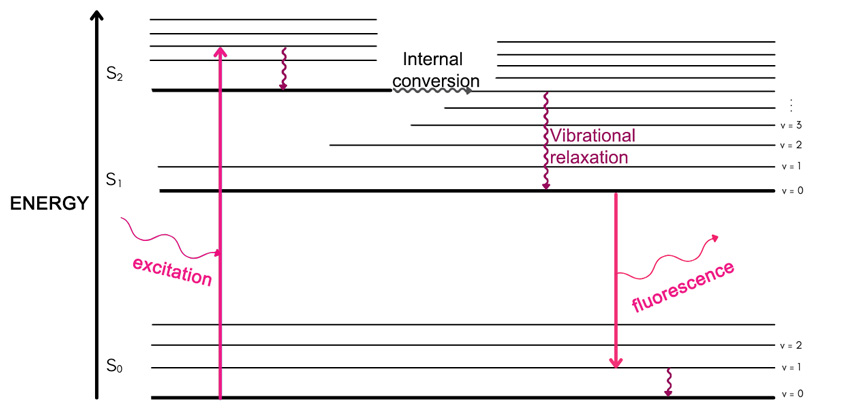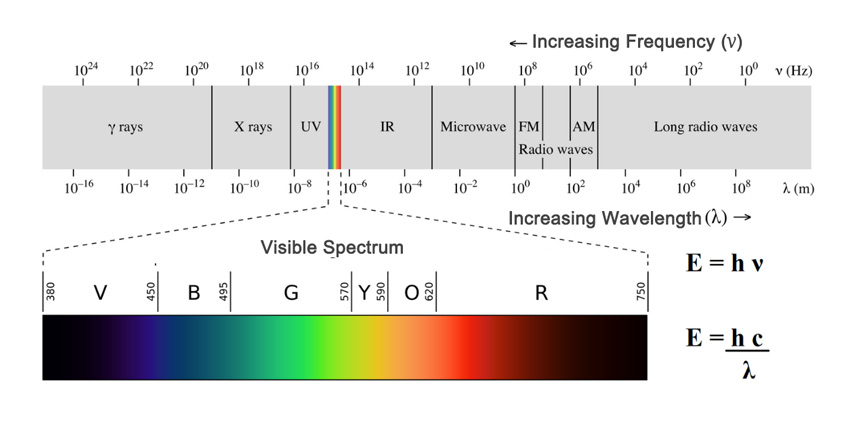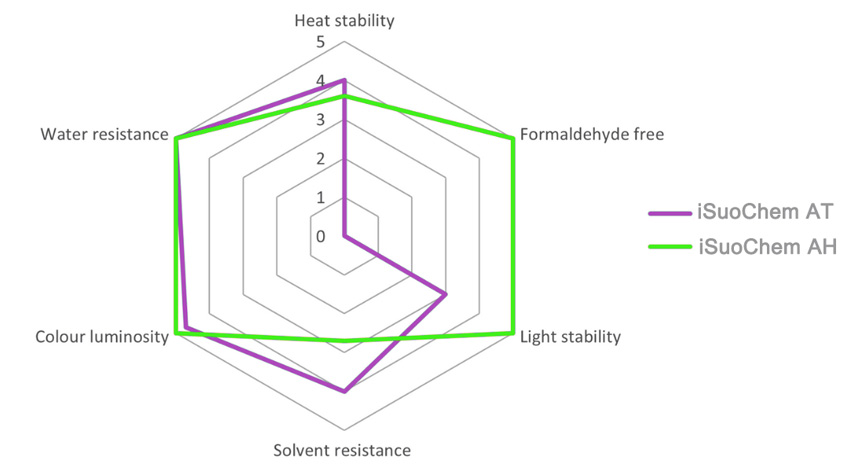categories
recent posts
Fluorescent Pigment: Brighter and More Vibrant Colors
Blog of Fluorescent Pigment | Author: Jason, iSuoChem

What are Fluorescent Pigment?
Fluorescent Pigment is a type of pigment that can produce colors that are brighter and more vibrant than conventional pigments when stimulated by light. These pigments, also known as UV Fluorescent Pigment, owes their brilliance to UV light. When exposed to an abundance of UV light, such as in a blacklight, they emit eye-catching and vibrant colors. However, for applications where the same captivating effect is desired without relying on a blacklight, pigments that respond to daylight stimulation are required.
In this technical article, we will explore the world of Fluorescent Pigment
1. What is Daylight Fluorescent Pigment?
2. Features of Daylight Fluorescent Pigment for Applications
3. Understanding Fluorescence: What is Fluorescence?
4. The Mechanism behind Fluorescence: Why does fluorescence occur?
5. The Process of Fluorescence: How does Fluorescence work?
6. How are Fluorescent Colors Created?
7. Types of Daylight Fluorescent Pigments: Exploring the Possibilities
Summary: A Vivid World of Possibilities
1. What is Daylight Fluorescent Pigment?
Daylight Fluorescent Pigment (DFP), such as the iSuoChem AP, AH, AM, AB, AT and AL series, is a kind of pigment that fluoresce when stimulated by daylight. These pigments produce bright colors that can be used in various applications. DFP consists of fluorescent dyes encapsulated in resins or polymers, resulting in fluorescent powders.
DFP offers the advantage of objects colored with Fluorescent Pigments being perceived three times earlier than those colored with conventional pigments. This enhanced visibility makes them highly beneficial in applications where catching the eye is important. Industries such as cosmetics, sportswear, stationary, warning signs, safety gear, packaging, and advertising (Image A and D) can all benefit from the use of Fluorescent Pigments. Additionally, Fluorescent Pigment is available for different materials such as paint, ink, oil, and water, with plastics being a popular choice.

Image A: Fluorescent pigment applied for garments, fishing lures, Stationery, Sports, various plastic products.
2. Features of Daylight Fluorescent Pigment for Applications
To be effective as Fluorescent Pigment, DFP should possess certain key features. Pigment brilliance and luminosity is crucial, along with heat and light stability. Solvent resistance and water resistance are essential to ensure the pigment remains suspended in the substance it is introduced to, without dissolving or forming a gel. Depending on the application, other factors like opacity or transparency may also need to be considered.
3. Understanding Fluorescence: What is Fluorescence?
Fluorescence is a type of luminescence, specifically a type of photoluminescence. Unlike phosphorescence or chemiluminescence, fluorescence relies on light as the triggering factor. When a molecule absorbs a photon of light and its energy, it can re-emit a photon of lower energy and higher wavelength. This emitted light is known as fluorescence or fluorescent light.
4. The Mechanism behind Fluorescence: Why does fluorescence occur?
To comprehend why fluorescence occurs, we need to delve into the quantum mechanical structure of molecules. Atoms consist of a positively charged nucleus holding negatively charged electrons. Electrons occupy discrete energy levels within the atom. When atoms combine to form molecules, their energy is reduced, resulting in greater stability. Molecules create new energy levels called orbitals for electron occupancy. Each atom or molecule has specific and discrete energy levels, leading to a quantized system.
The ground state, representing the lowest energy level, is the most favored and stable state for a system. When energy is introduced into the system, molecules enter an excited state, which they quickly transition out of to return to the ground state, releasing energy in the process. Fluorescence is one such process.
5. The Process of Fluorescence: How does Fluorescence work?
When a molecule is exposed to light waves, it absorbs a photon, which elevates an electron from the ground state (S0) to an excited state (Sn). The molecule can then undergo several processes, including vibrational relaxation, internal conversion, and fluorescence. In vibrational relaxation, the electron drops to the lowest.

Image B: This diagram shows the different energy levels in a molecule and the steps involved for fluorescence to happen. It helps us understand how light is emitted from a molecule.
5-1. Vibrational Relaxation: Unveiling the Energy Levels
Within the realm of energy states, a fascinating phenomenon occurs—the presence of smaller energy levels known as vibrational levels. As the electron soars through these levels, it eventually settles at the lowest vibrational energy level within the excited state (v = 0). This remarkable descent is referred to as vibrational relaxation, accompanied by the emission of a minute amount of energy in the form of heat.
5-2. Internal Conversion: The Intricate Energy Dance
Once the electron reaches the lowest vibrational energy level of a particular state, it yearns to descend further into the next energy state. However, in states beyond the initial one (Sn+1), it accomplishes this by transitioning from a lower vibrational energy level of the higher excited state to a higher vibrational energy level of the excited state directly beneath it, while preserving the same energy value. This intricate process, known as internal conversion, is an isoenergetic dance where no energy is lost or gained.
5-3. Fluorescence: Illuminating the Spectacle
The culmination of vibrational relaxation and internal conversion paves the way for fluorescence to take center stage. When the electron finally reaches the lowest vibrational level of the first excited state (S1, v = 0), a mesmerizing spectacle unfolds—the electron gracefully descends to the ground state, releasing the remaining energy in the form of a radiant photon of light. Unlike the initially absorbed energy, this emission carries a slightly lower energy level, resulting in a photon with a lower frequency and higher wavelength(Image C). This transition into visible light allows us to witness the enchanting colors emitted by fluorescent pigments.

Image C: The electromagnetic spectrum encompasses various types of light, each characterized by a specific wavelength and frequency range. An important relationship to grasp is that energy and wavelength are inversely proportional. In simpler terms, when light carries lower energy, it corresponds to higher wavelengths. This connection becomes significant because higher-wavelength light falls within the visible spectrum, making it observable to our eyes.
6. How are Fluorescent Colors Created?
The fascinating consistency of certain energy levels within a molecule gives rise to the mesmerizing phenomenon of fluorescence. Remarkably, each molecule emits light of the same wavelength consistently, leading to distinct colors. This remarkable trait remains unaffected by the wavelength of the absorbed light, thanks to the preliminary processes of vibrational relaxation and internal conversion.
In the vast electromagnetic spectrum (Image C), ultraviolet (UV) light occupies lower wavelengths compared to visible light. Hence, in the case of Daylight Fluorescent Pigments (DFPs), the absorbed light belongs to the UV spectrum found in normal daylight, while the emitted light emerges in the higher wavelength range of visible light, allowing our human eyes to marvel at its beauty.

Image D: Let's take a look at how fluorescent pigments are used in the cosmetic industry, particularly in nail varnish. These pigments add a touch of brilliance to nail polish, creating vibrant and eye-catching colors that truly stand out.
7. Types of Daylight Fluorescent Pigments: Exploring the Possibilities
7-1. Common Daylight Fluorescent Pigments: Illuminating the Classics
One of the most prevalent types of Daylight Fluorescent Pigment is melamine formaldehyde encapsulated pigments. These remarkable pigments offer a symphony of high fluorescence, exceptional solvent resistance, and remarkable stability in the face of heat and light. Our renowned iSuoChem AP type boasts a diverse palette of colors, finding applications in a wide spectrum of fields ranging from safety signage to novelty creations.
7-2. New Mix Polymer Daylight Fluorescent Pigments: Embracing the Future
In the pursuit of safer alternatives, industries have sought to move away from formaldehyde-containing technologies. Previously, low solvent resistance limited the widespread use of formaldehyde-free Daylight Fluorescent Pigment, as the encapsulated pigments would dissolve, forming a gel, when incorporated into solvents. However, through meticulous optimization of mixing polymers, such as those found in our iSuoChem AH series, a breakthrough has been achieved. These hybrid polymers not only match but often surpass the formaldehyde-containing counterparts in terms of solvent resistance while preserving other essential features (Image E).

Image E: To better understand the key qualities that Daylight Fluorescent Pigments (DFPs) require, let's visualize them using a radar chart. This chart provides an overview of important features and compares how the iSuoChem AT and iSuoChem AH series measure up in meeting those requirements.
Luminosity tests reveal comparable results between equivalent colors of both ranges, with reflections 2-3 times more intense than traditional non-fluorescent pigments. Our range encompasses a plethora of captivating colors, including fluorescent pink, fluorescent orange, and fluorescent yellow pigments.
Assessing the Light Fastness and Heat Stability
The Blue Wool Scale allows us to gauge the light fastness or stability of a pigment by measuring color degradation when compared to an identical sample left in complete darkness. In this regard, iSuoChem AT outshines its conventional counterparts, making it ideal for applications involving paints and spray cans.
Furthermore, certain applications demand pigments capable of withstanding high temperatures. Here, the new hybrid polymer DFPs exhibit remarkable resistance comparable to the iSuoChem AH series, maintaining color strength even at temperatures reaching 260°C. In fact, these pigments remain stable at an impressive 280°C.
Summary: A Vivid World of Possibilities
Daylight Fluorescent Pigments open up a realm of vivid and captivating effects. While the traditional iSuoChem AT series based on melamine formaldehyde technology has been widely embraced, the emergence of formaldehyde-free alternatives has ushered in a new era. With their ability to replicate colors effortlessly, demonstrate stability in aqueous and solvent-based products, and withstand demanding heat and light conditions, the iSuoChem AT series stands as a versatile option for a multitude of luminous applications. For further insights and personalized recommendations for your unique formulations, don't hesitate to reach out to your dedicated account manager or contact us to discuss your requirements.
previous : What are Fluorescent Pigments?
the professional team to service !